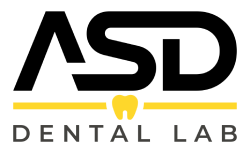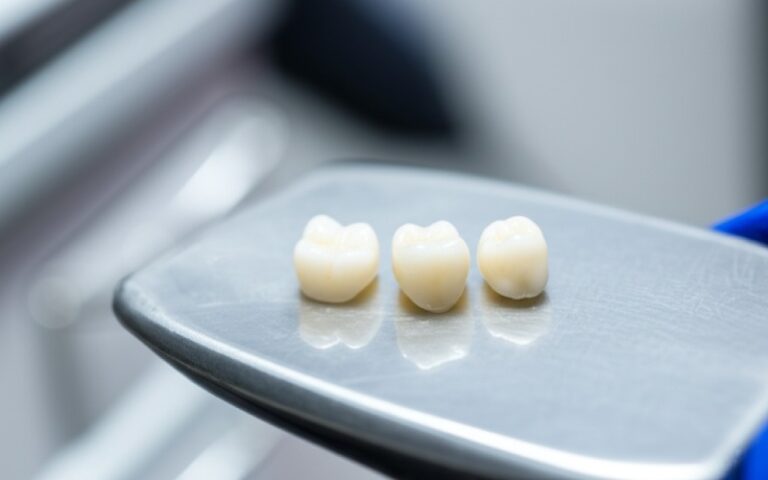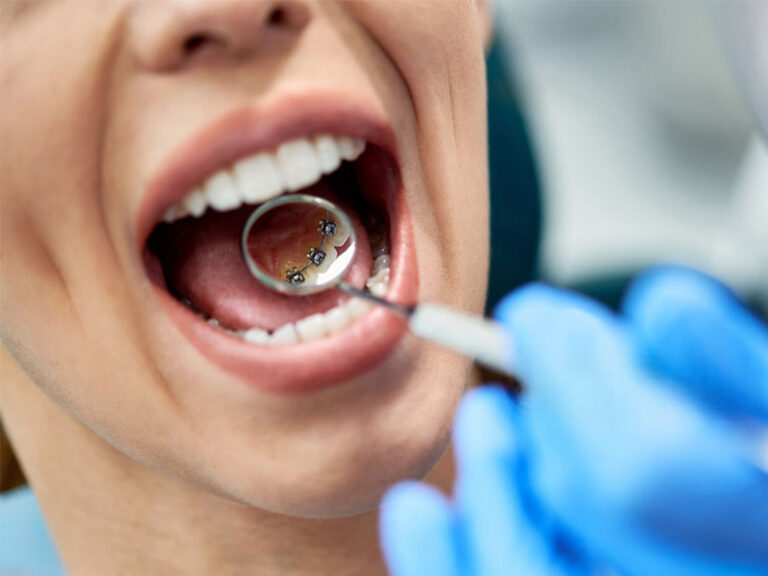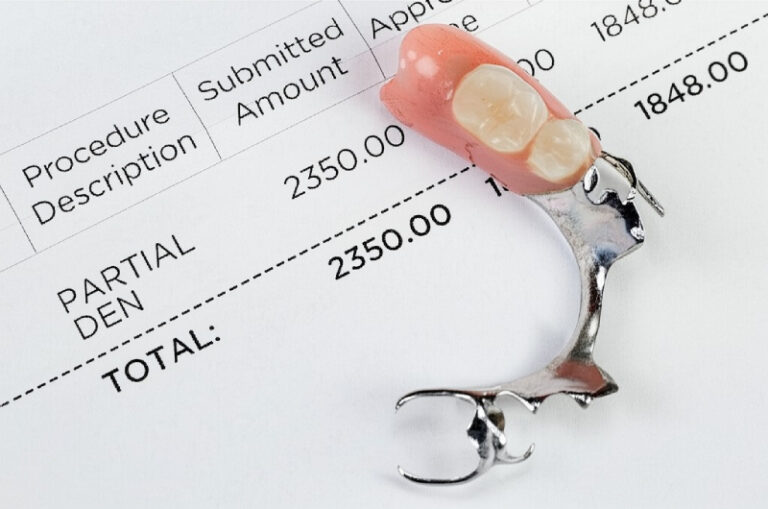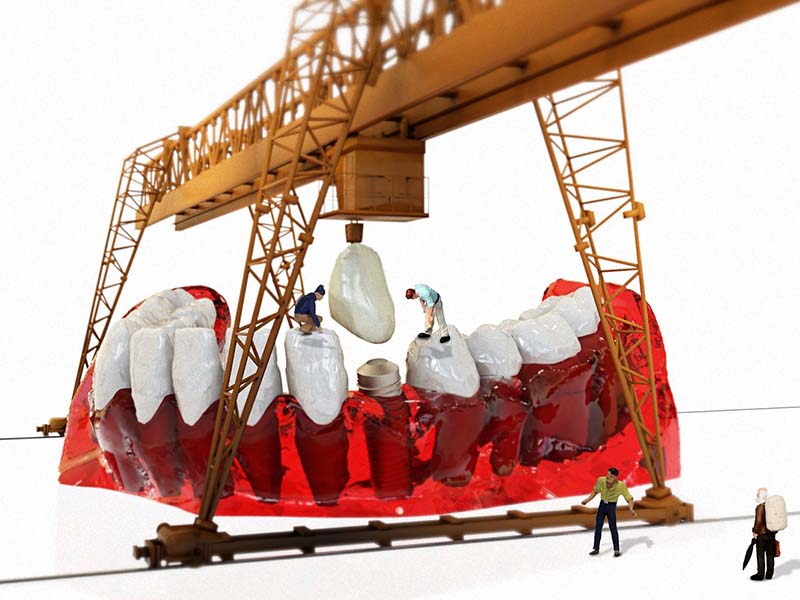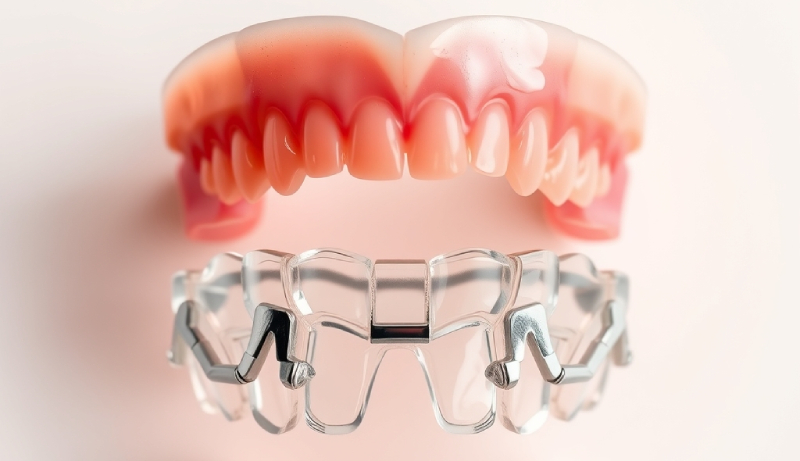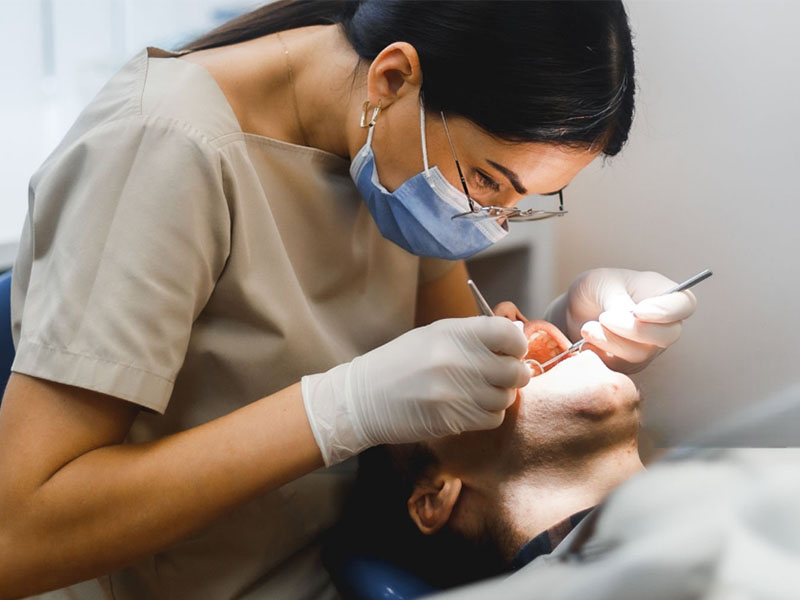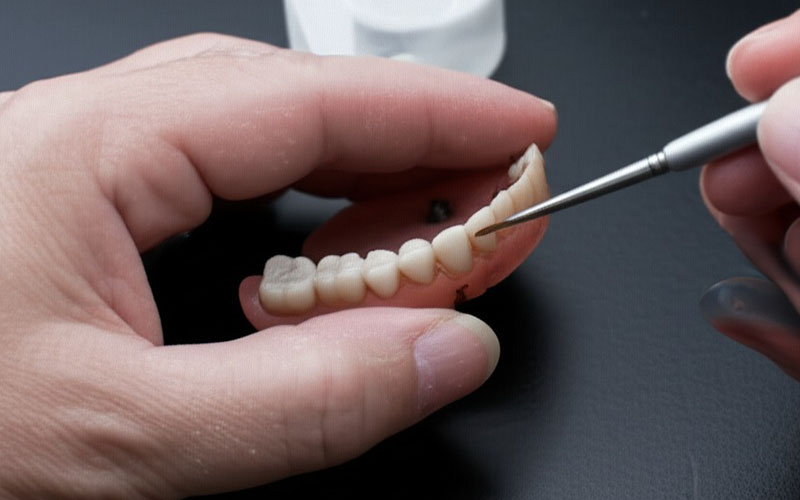
The Unsung Architects: How Dental Labs Make All-on-X Treatments a True Success
Ever wonder what’s really going on behind the scenes when someone gets a new smile with an All-on-X dental implant? Maybe your dentist mentioned the lab, or you’ve seen stories online about dental prosthetics being made with “precision craftsmanship.” But is the dental lab really that important? Is it just a factory, or is it a key part of your care team? If you’re asking yourself what difference the lab makes, if you should just trust the process, or how those final results actually come together, you’re in just the right place.
Let’s clear up the mysteries of dental labs, and show you why they’re truly at the center of every great All-on-X case—answering your questions, explaining the basics, giving you real advice, and helping you feel ready and upbeat as you take your next step toward a healthy, lasting smile.
Table of Contents
What Exactly Is All-on-X?
You’ve heard the name: All-on-4, All-on-6, All-on-X. But what does it actually mean? In simple terms, All-on-X is a way to give someone who has lost most or all of their teeth a full new set. Dentists put 4, 6, or another number (“X”) of implants into your jawbone, and these act like anchors to hold your new teeth in place—a set that stays put and feels much more real than dentures.
Think of it this way: If your mouth is a house, regular dentures are like putting a roof on with no walls or foundation. All-on-X, though, puts in “pillars” (the implants) into your jawbone, then secures the roof (your new teeth) on top. You get real comfort, can bite better, talk clearly, and feel good about your smile.
But here’s what surprises a lot of people: the dentist isn’t making those new teeth right there in the office. Instead, a dental lab—not seen by most patients—designs and builds your final teeth. These lab technicians are skilled pros, not just busy workers running a machine.
Why Does the Dental Lab Matter So Much?
Here’s the truth: a great new smile is only as good as its parts. Even the best implants won’t shine if what sits on them isn’t quite right.
The Lab Is More Than a Factory
A lot of people imagine a dental lab as a place that just “makes teeth.” Actually, it’s more like a mix between a small workshop, a design studio, and an art room. Dental lab techs are a neat mix of science fans, computer users, and artists.
Their work affects:
- How real your smile will look
- How comfy and workable your new teeth feel
- How well the teeth fit (no stress, no wobbles or snapping)
- How long your new teeth will last
The Hidden Teamwork
Every great All-on-X case is a real team effort. The dentist puts in the implants and sets the plan, but the dental lab makes the new smile a reality—using computer programs, their knowledge of materials, and a great sense of what makes a good smile. When they do things right you won’t even notice; but when things are off (like a bad fit or a weird color), you sure will.
How Does the Lab Help Plan and Design Your New Smile?
You might think the lab only gets started after the implants go in, but actually, they’re part of the plan from early on—and it shows.
Digital Steps: Making the Plan on a Computer
Remember when dentists used to take those mushy putty molds? Today, labs usually work with digital scans made with devices that take pictures of your mouth. Sometimes they even get 3D x-rays of your whole face and jaws to make a super-accurate model.
What they do:
- Get your digital scans (mouth, face, bone)
- Put this info into smart computer programs like Exocad or 3Shape
- Use “virtual jaw testers” to see how your bite will work on a computer screen, before making anything
This digital setup doesn’t just make things quicker; it helps make sure the fit and looks are just right from the start.
Planning Together: Making the Ideal Smile
The lab and your dentist work as a team to figure out:
- Where to put each implant so your new teeth are strong and well-placed
- Making sure there’s enough room for sturdy materials (no thin spots)
- Choices like the shape, line of your gums, and the color of your teeth
They don’t just guess—they use computer previews or sometimes physical models you can see.
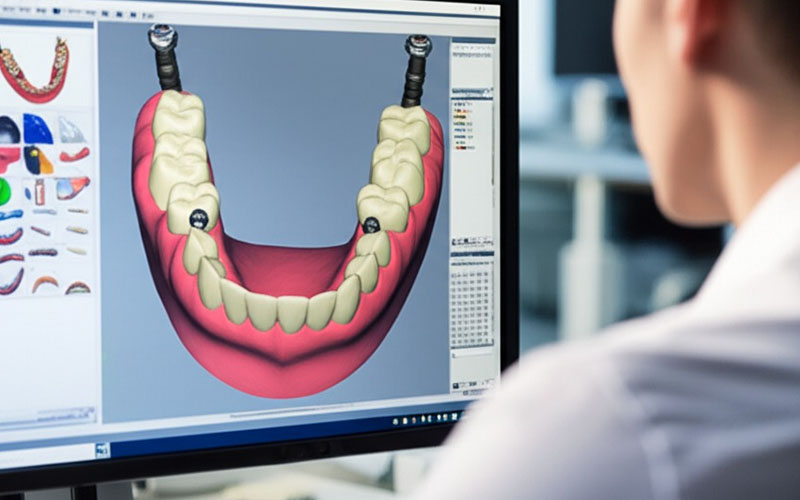
The Temporary “Test-Drive” Smile
Most people getting All-on-X get a temporary set of teeth right after surgery, usually made from a tough type of plastic called PMMA. The lab:
- Designs and makes this temporary using your digital scans
- Makes sure it looks good and fits well
- Builds it strong enough for eating, but easy to tweak if needed
Why is this step so important?
It’s your chance to “test drive” the look, speech, and how your new teeth feel before getting the final version.
What Happens When They Make Your New Teeth—And Why Doing It Right Really Matters
Here’s where the real magic happens—making the plan into a full set of working, real-looking teeth.
Picking the Right Materials: Science Meets Art
There’s no “one choice for everyone” for All-on-X. The lab helps pick the right stuff for you:
- Zirconia: Super tough, doesn’t chip much, tooth-colored—great for full sets
- Titanium: Often used for hidden parts, since it’s strong and safe
- PMMA: The plastic used for temporaries, but also sometimes final teeth for those on a budget or who need quick changes
- Composites (Pink stuff): Looks like natural gums, good for a real appearance
The lab’s job is to match what you need—strong teeth, real looks—so you get the best of both.
Making Your New Teeth: Even the Tiny Details Matter
Making teeth is like building a bridge. If something’s off by even a small bit, the whole thing can be shaky. With dental work, the wiggle room is even less.
Modern labs use:
- CAD/CAM machines to carve out parts from strong blocks—they get the fit so good, teeth just drop right into place and don’t put stress on your implants
- 3D printers for making quick models, guides for surgery, and sometimes temporary teeth
- Super-hot ovens to harden materials without messing up their fit
A perfect fit—called “passive fit”—is the secret. It helps your new teeth attach right, cuts down on stress, and keeps screws from loosening or things breaking.
Looks & Design: Not Just “Pick a White”
Making your new smile look good is more than grabbing a card and picking a shade. Lab workers are really artists:
- Matching Your Color: They mix colors and see-through bits so your teeth look natural, not just bright and fake
- Gum Look: They use pink stuff to make your gums look real, which is even more important if you show a lot of gum when you smile
- Tooth Shape & Light: They make teeth with the right size and shine so they look like real ones
When you see amazing before and after photos, you can thank the lab’s skill and artist eye!
How Dental Labs Help Make Sure Your New Smile Lasts
You want your new smile to last years—not just months. The dental lab is your behind-the-scenes partner helping that happen.
Comfort and Bite: Making Everything Work Together
Biting, chewing, even talking puts pressure on your new teeth. Labs use computer programs to plan:
- Even contact everywhere
- Relief from “hot spots” where the bite is too strong
- A bite pattern that matches how your jaw moves
This focus on comfort keeps your new teeth strong and your implants safe.
Quality Checks at Every Step
Labs don’t send out “drafts.” All the way through, they check and double-check:
- Use computer and physical try-ons before final glue-down
- Double and triple check every part—from how it fits, to how smooth it is
Doing it right now means way less time fixing things later or making you come back for “redos.”
Your Experience: What It Means For You
When the lab does a good job, here’s what you get:
- Less time in the dental chair (fewer fixes and appointments)
- Easier switch from temps to finals
- Eating and talking are better right from the start
- Bring-your-friends kind of confidence from natural looks
In short: your path to a new smile is smoother, less stressful, and much more likely to turn out just the way you hoped.
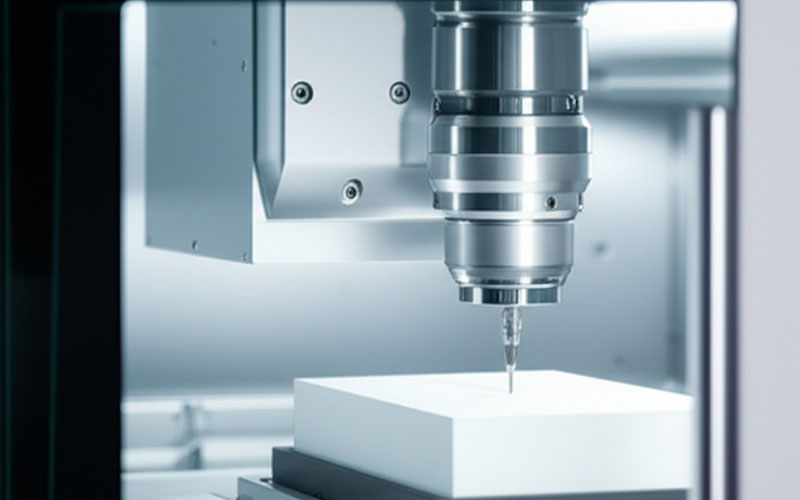
What Makes a Really Good All-on-X Lab?
You might have the best dentist out there, but if the lab isn’t great, the final result will suffer. How can you or your dentist tell if a lab’s really good at full-arch implants?
Look for:
- Experience: They often do All-on-4, All-on-6, or similar cases, and can show who they’ve helped
- Modern Tools: They use up-to-date machines, 3D printers, and computer scanners
- Teamwork: Labs that talk openly with dentists, handle feedback, and answer questions easily
- Learning: People who keep up with what’s new and go to classes or meetings
- Proof: Before-and-after photos, real reviews, and written guides or instructions
Having a skilled lab is one of the best ways to protect your new smile.
By the Numbers: How Labs Really Change Outcomes
Let’s look at a simple table that shows some differences between great labs and not-so-great ones (these numbers are typical trends—not pulled straight from one study, but in line with good dental research):
| What’s Measured | With a Skilled Lab | With an Average Lab | Why It Matters |
|---|---|---|---|
| First try fit (% of cases) | 98-99% | 80-90% | Good fit saves you time and hassle |
| Smile lasts 5+ years | 95%+ | 80% | Strong teeth last longer; bad ones break sooner |
| Cases needing a redo (in a year) | <2% | 10-20% | Fewer redos means less money and stress |
| Problems with screws/breaks | <5% | 15-20% | Good fit keeps things from breaking |
| Happy patients (surveys) | 95%+ | 75-85% | Comfort, looks, and ease make you feel good |
“Is All-on-X With a Dental Lab Right for Me?” Who It Helps Most
You might ask: Is this detailed process right for everybody? Here’s the straight answer.
Good People for All-on-X (and a Great Lab)
- Missing most or all your teeth on the top or bottom
- Tired of loose or big, clunky dentures
- Have good enough jawbone for implants (or okay doing a bone fix)
- Want teeth that look and feel real and stay in
- Care about long-lasting looks and real function
Who Isn’t a Good Fit?
- Have bad gum disease right now (this needs to get fixed first)
- Big health problems that make surgery unsafe (your dentist will help decide)
- Don’t have realistic expectations—like wanting super white teeth that won’t match your face
Being straight with your dentist and lab helps. If you’re ever unsure, just ask the dentist to walk you through how the lab and your doctor will work together for your smile.
Key Points & Easy Next Steps: Your Smile-Ready Checklist
In the end, here’s what really matters:
- Dental labs don’t just “make fake teeth”—they are important partners and designers of your new smile.
- They start planning from the first visit, work with your dentist, and help make a smile that looks and works for you.
- The best labs use the latest tools, careful steps, and double checks to get things perfect.
- A skilled lab makes your chances of long-lasting, comfortable results much better.
- When you’re thinking about All-on-X or a similar fix, don’t be shy: ask your dentist, “What lab do you use for these?” or “How do they make things look the way I want?” or “Do they work a lot with full jaws of implants?”
Your next steps:
- If you’re already seeing a dentist, ask for some before-and-after photos, and talk openly about labs and materials.
- Feel scared or unsure? Look up reviews, ask for past patients’ views, or see if the lab has any awards or certificates.
- Remember, getting All-on-X is picking a team—a dental surgeon, a dentist who cares, and a smart, skilled dental lab.
A new smile changes your life. You want the right team building it—including the experts you might not see—the lab techs. There’s real know-how and craft in every solid All-on-X.
For more details or to ask about what’s right for you, talk to a dentist who believes in real teamwork and lab quality. Your steady, happy smile is closer than you think—now you know the hidden hero that makes it all possible.
Sources:
- American Dental Association (ADA): “Dental Implants.”
- International Journal of Oral Implantology: Info about long-term All-on-4/All-on-X outcomes
- Nobel Biocare and Straumann: Tips for doing full-arch teeth
Checked for accuracy by Dr. Emily Davis, DDS, Board-Certified Prosthodontist.
Remember: Good knowledge is power—when you’re talking about your smile, you want a team that has skill and cares from start to finish.
